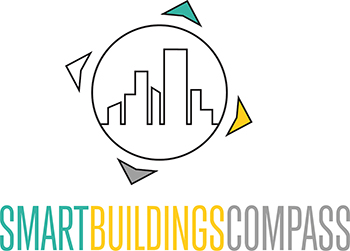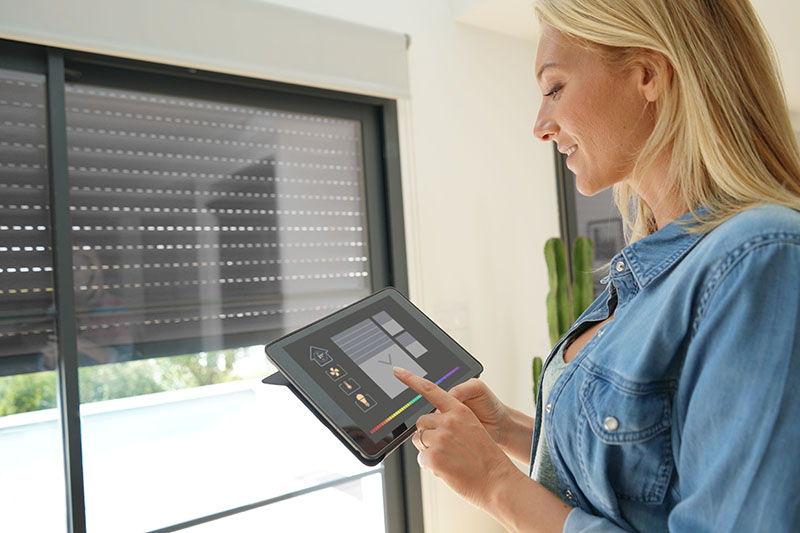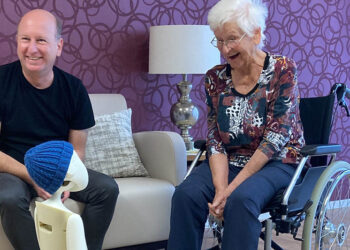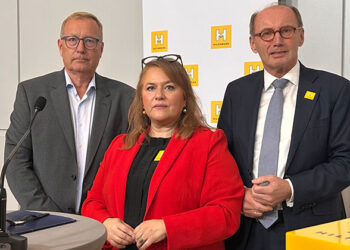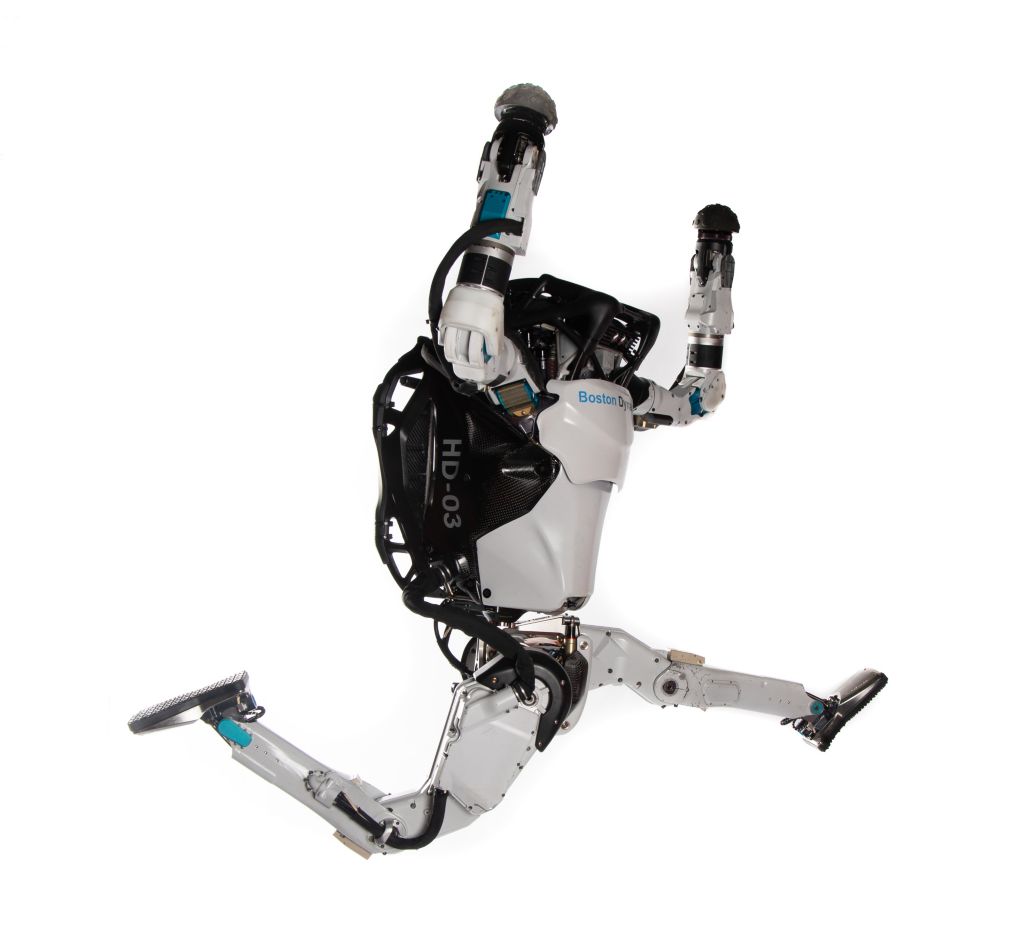
Our interview partner:
Günther Ohland is an expert and journalist for telecommunication, telemonitoring, SmartHome, SmartBuilding and SmartCity, as well as a founding member of the SmartHome Initiative Germany. Ohland is also the author of several books on the subject of SmartHome and Smart Living.
His latest book “Bits and Bytes instead of Molecules” was written during the pandemic and addresses how the COVID pandemic has forced us to use technology. (Photocredit: Günther Ohland)
Mr. Ohland, you have been monitoring developments in the smart home market for many years. Can you describe the current situation in Germany?
In Germany, housing cooperatives are often both developers and also building operators. Their focus lies not only on the costs of construction, but also on the costs along the entire life cycle. At municipal level, some good examples of smart projects already exist, especially in social housing.
There are planners who have already understood: If you want to provide affordable housing in the long term, you have to build smart. Otherwise, you save money in one place and pay the follow-up costs from the neighbor’s budget.
Smart building concepts are worth being considered, especially in times of rising energy costs. Nevertheless, they are not yet being implemented in all areas. What do you think is the reason for that?
In my conversations with mayors, the counterargument is that, for example, providing subsidies for smart radiator thermostats would inadmissibly subsidize private housing associations with taxpayers’ money. Municipally owned housing, however, is eligible for subsidies. We must overcome these old regulations in order to meet the current challenges.
I can only advise to appeal to common sense. If we consider the social aspect, there would be a great deal of potential with products already on the market.
Can you give us an example?
Smart heating thermostats can save up to 30% energy, and after just 2-3 years the investment pays off for the residents because of the lower consumption costs. (Explanation note: This will lower the temperature when leaving the house and raise it again on the way home/coming home)
But why should the owner invest if only the tenant benefits? At present, the owner cannot even deduct this investment from his taxes. At the same time, such small solutions quickly provide savings.
Or let’s take a look at age-appropriate housing. A place in a nursing home for people who can no longer live alone at home is subsidized by the social security funds approximately 3,000-5,000 euros per month.
However, if a single investment of 2,000 euros were made in an apartment, many seniors would be able to remain in their own homes for several more years because they would then have age-appropriate support. For example, through alarm functions that detect falls. People feel more comfortable in their own home than in a home, and for a small single investment, you can ensure that the large monthly sum does not have to be paid in the first place.
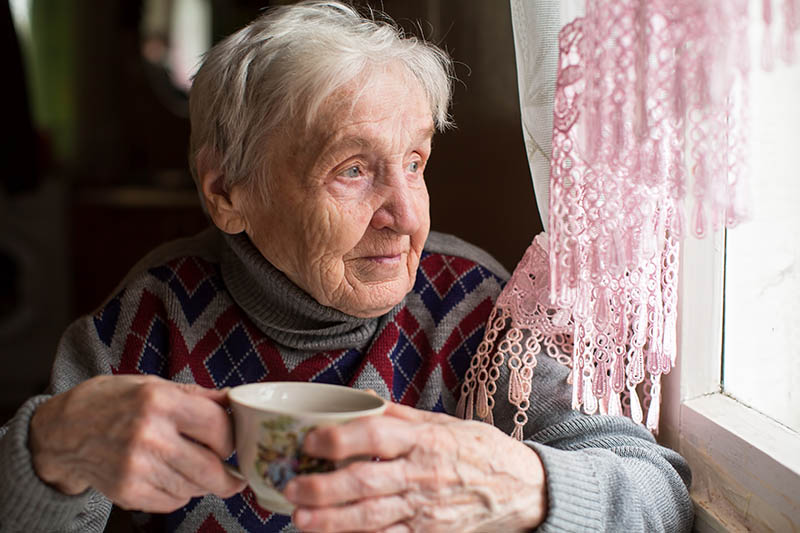
I often hear the counter-argument: That costs too much money. The amount of 2,000 euros doesn’t sound like much investment when compared to the cost of a place in a nursing home. Why does the prejudice about high costs remain so persistent?
The calculations for individual apartments and houses include the costs for planning and design, but of course these do not represent the price that these smart apartments will cost when a residential block is converted. I don’t have to develop a new solution every single time.
Let’s take eastern Germany as an example: In the remaining slab blocks, we basically have two floor plans. This means that once I have worked out a solution, it is valid for all apartments of the same type and can be produced on a quasi-industrial scale.
Basically, the rule has for several years now been: If you plan a building smartly from the start, then you have cost equality between a non-networked and a networked building if the functions are the same. However, smart buildings are often accompanied by more functionality, which of course costs more money.
But I also assume that solutions are often calculated more expensively so that they do not have to be implemented. People try to implement the old concepts until it’s no longer possible.
In other words, you assume that people want to keep the old concepts. Why?
If you take a closer look at professional residential construction, there are several reasons for the fear of smart installations: For many years, smart home was very expensive, actually unaffordable for residential construction. Because only small quantities were produced and you needed proven specialists to install them. At that time, housing construction companies tried out smart concepts, and like many things in the early stages, projects went wrong.
But the fears also came from the cryptic programming that was still necessary at the time. If they don’t do it every day, then they quickly don’t know in detail how it works – and certainly not what they did 2 years ago. But there has been a lot of development in the last few years, there is already a whole range of highly professional systems. Today, you no longer have to code, but rather configure. The products can be installed, added, further developed and maintained with little IT expertise.
In professional housing construction, the decision is not made by technicians, but by businessmen and lawyers according to their own criteria. In addition, projects have always had to be cheaper in the past. In many cases, the craft sector has thus lost good skilled workers. It is hardly surprising when only the simplest quality and simplest concepts can be installed.
If you look at the sales figures, the lower-priced wireless solutions are the only systems that are already scaling today – in other words, those are proving a commercial success with private consumers. Is there already a trend recognizable? Will the systems – e.g. KNX systems vs. wireless systems – be divided between commercial and private use?
In the commercial and industrial sector, wired systems will continue to dominate. In the private sector, cheaper and upgradeable wireless systems will prevail in the majority. After all, the cabling in commercial and industrial buildings usually does not change as long as the building is in use. In the private sector, the way we use space changes depending on the phase of life. Cables would have to be relocated on a regular basis.
This is the reason why many prefabricated house manufacturers are using wireless solutions in their smart buildings nowadays – because it gives them the flexibility they need. The switches and sensors can be placed in the building wherever the customer needs them. For example: Bookshelves that suddenly cover the light switches. Do you want to saw off the shelf – or just replace the light switch where it fits better?
The counter-arguments often heard: Wireless solutions are not as powerful as wired solutions and are more insecure.
The arguments against wireless solutions are not always comprehensible. In industry, for example, there are emergency stop switches that work via wireless. If you’re already relying on wireless solutions in safety of people, you can no doubt switch lights with them.
Through Covid, our homes have become more digital – they became smart home offices and school centers. How do you think smart solutions will evolve?
In the past, the manufacturer developed a product, the wholesaler sold it to the craftsmen, and they sold it to the end consumers. That doesn’t work today. The consumer demands what he or she wants.
It would be nice if the end consumers did not demand a special product, but rather the desired functionalities. Then craftsmen can offer the best system for this. However, private developers have had many discussions with craftsmen in the past, and many have resisted smart solutions for a long time. Since there is enough information on the Internet, end consumers simply get informed online. Today’s customers are so well informed that they even tell the craftsmen what products to use.
What expectations are you placing in the new German government?
Housing has always been communicated as very important topic, but for a long time it doesn’t have an own ministry. Now we have one, which is new and a good thing. Construction in Germany is a federal state matter. Experience shows that the federal states are gradually adapting their structures to the federal government. The Minister of Economics and the Minister of Construction have recognized the need for change, particularly for climate and environmental reasons. I hope, therefore, that construction will not just be an administrative matter in the future, that it really is a moving forward issue. In fact, the future of construction is smart.
Thank you for the interview!
You can find out more about Günther Ohland and the Smart Home Germany initiative under https://sites.google.com/view/goredaktion/start and https://www.smarthome-deutschland.de.
Author: Anja Herberth
Chefredakteurin
